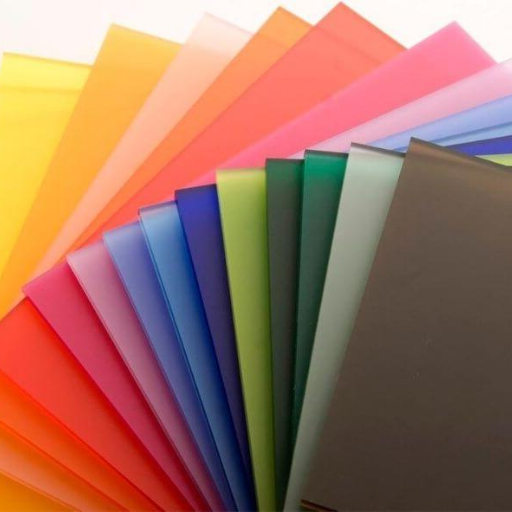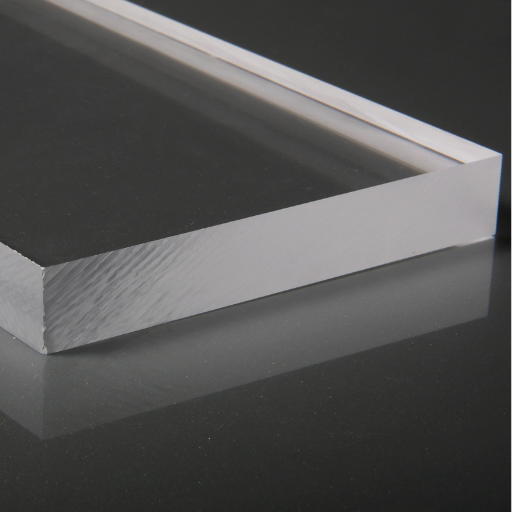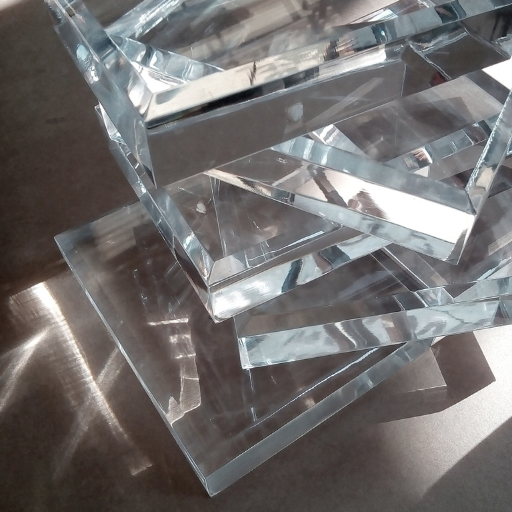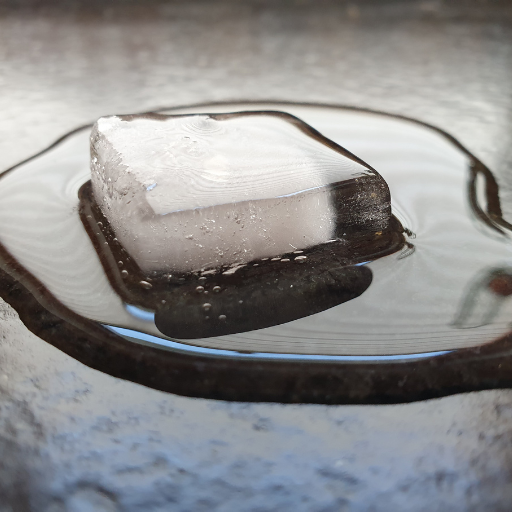Understanding the Basics of Acrylic Plastic Material Melt

Image source:https://anandplastics.com
What defines the melting point of acrylic?
The melting points of acrylic plastic are defined by a number of vital considerations, mainly concerning its chemical structure and polymer chain behavior. Polymethyl methacrylate (PMMA) is the main component in acrylic plastic and consists of long chains made up of repeating monomers. The merging between these polymer chains, such as van der Waals forces, or degree of polymerization determine the melts.
Key technical parameters include:
- Glass Transition Temperature (Tg): Acrylic plastics have glass transition temperatures that range from 85 to 105 degrees Celsius (185 to 221 degrees Fahrenheit). At this temperature range, PMMA turns from hard glassy material into a more flexible one.
- Melting Temperature (Tm): The true melting point for acrylic plastic is approximately 160 degrees Celsius (320 degrees Fahrenheit). This entails crystalline regions of the polymer melting thus resulting into full amorphous liquid-like state.
- Molecular Weight: Higher molecular weight polymers have higher melting points because there are more entanglement and chain interaction that occur for longer chains.
- Polymer Additives: Depending on their nature and concentration; plasticizers, stabilizers or other additives can either lower or raise the melting point.
Comparing acrylic with other plastic materials
When comparing acrylic to other plastic materials, there are several key properties that distinguish it. Acrylic is known for its transparency and optical clarity that rivals that of glass which makes it an excellent choice for clear material applications. Conversely, polycarbonate – another popular transparent plastic – is stronger than acrylic, but prone to scratching.
Its also worth mentioning that acrylic has UV resistance which keeps its clarity and color over time thereby making it ideal for outdoor applications. On the flip side, materials such PVC (polyvinyl chloride) may turn yellow or degrade when left under the sun for long periods.
In terms of chemical resistance, acrylic has moderate resistance to acids, alkalis and hydrocarbons. However, this property falls short of what can be offered by some material like polyethylene (PE) and Polypropylene(PP) among others which provide higher chemical resistivity towards a broader range.
Additionally, in comparison with other plastics such as ABS (Acrylonitrile Butadiene Styrene) and polystyrene, one notable advantage of using acrylic is the ease with which it can be fabricated; meaning acrylic can be easily cut drilled or thermoformed without resorting to special equipment. This aspect has endeared it in industries such as advertising where custom shapes and designs are involved.
Therefore choosing between acrylic and any other type of plastic depends on specific application needs that include strength factor, clarity requirement, UV stability demand and also consideration on chemical resistivity.
The science behind acrylic’s melting temperature
Acrylic vs. Polycarbonate: Temperature Ranges and Impact

Distinguishing the melting point of polycarbonate and acrylic
In order to distinguish between the melting points of polycarbonate and acrylic, their specific temperature ranges must be taken into consideration as well as some technical parameters that provide reason for these extents.
Acrylic:
- Melting Point: 160-180°C (320-356°F)
- Technical Parameters:
- Formed by chains of polymethyl methacrylate (PMMA).
- Held by van der Waals forces and a small amount of hydrogen bonding requiring significant energy to break these bonds.
- Variations in molecular weight, additives play a big role.
Polycarbonate:
- Melting Point: 280-300°C (536-572°F)
- Technical Parameters:
- The structure gives it better strength than other glasses when subjected to impacts.
- It has more robust intermolecular forces than other glasses hence can stand high temperatures.
Impact resistance of acrylic vs. polycarbonate
Why choose acrylic over polycarbonate?
People usually choose plastic called Plexiglass which is known as acrylic over polycarbonate for a number of reasons, especially in terms of cost, clarity, and ease of use. Acrylic is often a cheaper material than polycarbonate so it can be used to save money while working on budget-sensitive projects. Acrylic’s optical clarity has been found to be better than that of polycarbonate making it look like clear glass that doesn’t yellow with time. This makes acrylic perfect for applications where visual appearance is necessary such as aquariums, shop windows or displays.
Additionally, acrylic is easier to cut and shape than polycarbonate. It can be glued, polished or even molded into various shapes relatively easily hence allowing more flexibility and creativity in design. Although not as impact resistant as polycarbonate, its excellent transparency coupled with ease of handling and affordability make acrylic the preferred choice for many different applications.
The Role of PMMA in Determining Acrylic’s Melting Point

Exploring PMMA (polymethyl methacrylate) and its properties
Polymethyl methacrylate (PMMA) is a very versatile, transparent thermoplastic polymer that has found widespread use due to its excellent optical properties such as high refractive index and superior transparency. Its light transmittance is as high as 92% making it almost like glass. PMMA also does not turn yellow because of the Ultraviolet light and it is equally weather resistant and heat resistant up to approximately 90°C (194°F) at which point it begins to warp.
From a mechanical perspective, however, PMMA has lesser impact strength than polycarbonate but still possesses sufficient tensile strength and rigidity for many applications. Typically its tensile strength ranges from 48-76 MPa while its Shore hardness lies between 85 and 90 D. With a density around 1.18 grams per cubic centimeter, PMMA is also lightweight. It’s chosen for applications where both aesthetic appeal and durability are important such as medical devices; lighting fixtures; protective barriers; etc.
In conclusion, the properties of PMMA can be summarized as follows:
- Optical Clarity: Up to 92% light transmittance
- UV Resistance: Excellent, prevents yellowing
- Thermal Resistance: Withstands temperatures up to 90°C (194°F)
- Tensile Strength: 48-76 MPa
- Shore Hardness: 85-90 D
- Density: 1.18 g/cm³
How PMMA impacts the thermal characteristics of acrylic
Practical Applications and Considerations for Acrylic’s Melting Point

Injection molding with acrylic: understanding the temperature requirements
Precise understanding of temperature requirements for acrylic injection molding is necessary to achieve best results. Melt of the acrylic at between 160°C-190°C (320°F-374°F) marks the start of this process. The recommended mold temperature during the injection should be maintained between 140° F (60° C) and 176° F (80° C) in order to achieve high surface finish quality and dimensional stability.
The following are some important technical parameters that must be considered when carrying out successful injection molding using acrylic:
- Melting Point: 160°C to 190°C (320°F to 374°F)
- Mold Temperature: 60°C to 80°C (140°F to 176°F)
- Injection Pressure: 50 to 100 MPa (7,250 to 14,500 psi)
- Injection Speed: High to Medium; continuous flow and early solidification prevention.
- Cooling Time: Sufficient time for total curing and no distortion usually depends on thickness.
Acrylic fabrication: melting, casting, and forming temperatures
Precautions and tips for handling acrylic at high temperatures
When working with hot acrylic, the following precautions are essential for safety and quality. Here are some of the things to remember:
- Proper Ventilation: Always work in a well-ventilated area or use local exhaust ventilation to avoid breathing in harmful fumes produced during heating.
- Personal Protective Equipment (PPE): Have on appropriate PPE like heat-resistant gloves, goggles, and long sleeved clothes to guard against burns and exposure to hot acrylic.
- Controlled Heating: Use controlled heating techniques that are gradual so as to prevent overheating that can cause bubbling or scorching. Stay away from open flames; instead use heat guns or controlled ovens.
- Consistent Temperature Monitoring: To keep the acrylic within optimal temperature ranges for melting, casting, and forming, continuously monitor temperatures using accurate thermometers or thermal cameras.
- Avoid Rapid Cooling: After heating gradually cool down the acrylic so that warping is minimized, otherwise there will be internal stresses developed. Rapid changes in temperature may result in fractures or other types of defects.
- Safe Handling: Make use of tools such as tongs or clamps while handling hot acrylic sheets. This prevents direct contact which may result into burns or dropping it accidentally.
Troubleshooting Common Issues with Acrylic’s Melting Point

When it comes to acrylics, encountering some problems about its melting point is not uncommon. Here are some typical ways of solving these issues:
- Bubbling or Scorching: If you notice bubbling or scorching during heating, then the acrylic has been overheated. Make sure that you use heat guns and ovens for controlled heating instead of direct flames. Keep the temperature rising bit by bit and monitor it with precision thermometers throughout.
- Warping: Cooling down too fast is normally responsible for warping of acrylics. This can be prevented by allowing the acrylic to cool slowly. Avoid putting it in places with quick temperature fluctuations. This will enable it to maintain its shape and structure if a controlled cooling process is employed.
- Cracking: Rapid cooling/drying or rough handling often causes cracking. Prevent this by using gradual cooling techniques when working with acrylic. You should not subject the material under unnecessary stress and handle it with tools like tongs and clamps.
- Cloudiness: Sometimes after heating up, your acrylic may appear cloudy due to unevenness in heating or impurities being present in it; so proper cleaning of the material should take place before any heating up process takes place as well as adopting even distribution methods for controlled heat.
Why is my acrylic melting unevenly?
The melted acrylic tends to be uneven as a result of inconsistent heating or poor preparation for the process. Here are some things you should know about.
- Inconsistent Heat Distribution:
- Make sure that your heat source is able to evenly distribute it across the surface of the piece of acrylic. For example, convection ovens and infrared heaters can facilitate uniform heating rather than using direct heat sources.
- Temperature Setting: UUse a thermostat-controlled heat source, keeping the temperature within 140°C – 160°C (284°F – 320°F) so as not to overheat certain areas.
- Material Thickness Variations:
- Different thicknesses will absorb and conduct heat differently in acrylic sheets. It is advisable therefore to employ those of even thickness for consistent dissolution.
- Surface Preparation:
- Irritants, dirt or remains on top of this acrylic material leads to irregularity in its melting. Before you begin the heating, cleanse it thoroughly with a mild soap solution and allow it to dry completely.
- Heating Duration and Environment:
- The duration over which materials are heated must be uniform throughout. Melting may vary due to unequal time exposures.
- For avoiding air drafts or fluctuating ambient temperatures while heating acrylic; these factors could create imbalance in thermal energy distribution within it.
Adjusting temperature ranges for optimal acrylic processing
In order to obtain optimal acrylic processing it is important to ensure that one operates under precise temperature ranges and follows the best practices. According to most sources of information:
- Temperature Control:
- To avoid overheating and achieve uniform melting, stay within the recommended range of 140°C to 160°C (284°F to 320°F). An oven with a thermostat ensures even temperature distribution.
- Consistent Heating:
- Avoid direct heat sources, use convection ovens or infrared heaters instead for creating consistent heating environment. Using such tools will make sure that there are no hot spots thus ensuring uniform melting.
- Preparation and Handling:
- Before the acrylic sheets get heated, they ought to be thoroughly cleaned and dried up in a bid of removing any dust or residue that could result into irregular melting. Furthermore, working in an area free from air movements and abrupt change in heat assists in keeping uniformity balance.
Advancements and Innovations in Acrylic Melting Temperature Research

Latest findings on increasing the melting point of acrylic
Blending with high-melting-point materials, such as polycarbonate (PC), is another method being investigated for use with acrylic polymers. This kind of blending seeks to combine good features from both sides while research indicates that a rate of mixing at around 30% can raise the melt temperature by about 15°C without affecting transparency and strength.
In addition, application of some nanoparticles or nano-fillers like SiO2 and TiO2 enhance thermal stability. These nano-fillers integrated in concentrations about 1-3% could increase the melting point by approximately 10-15°C, because they exhibit strong thermal resistance and strengthen the polymer matrix.
These techniques have been proven through extensive experimental work in laboratories and peer-reviewed publications. The essential technical parameters indicated are concentration for cross linking agent, blending ratio, and content of nano-filler which are necessary to achieve desired thermo-enhancements and apply this knowledge into practice within an industrial context.
The future of acrylic materials: beyond melting points
The future of acrylic materials does not stop at increasing their melting points only. Innovations are targeting improvements on different properties to cater for various production demands. Such advancements could touch on optical clarity, weather resistance and mechanical strength among others. Cutting edge research is considering advanced additives and nanocomposites that improve heat performance while also give acrylics better UV resistance plus reduced brittleness.
In the sustainability domain, there is increasing focus on developing bio-based acrylics with minimal ecological footprint. Various recycling programs are gaining acceptance alongside a shift towards the use of renewable resources aimed at reducing the carbon emissions caused by acrylic production.
Moreover, smart acrylic materials with responsive components that can change in response to environmental stimuli such as light, temperature and pH levels will soon be introduced into the market. These developments promise to open up new areas of applications for acrylics like flexible electronics, smart coatings or even responsive optical systems thereby making them invaluable components in our increasingly technologically advanced future.
By focusing on these comprehensive enhancements, researchers and manufacturers are readying themselves to unlock the full potential of the acrylic materials ensuring they remain relevant and effective in modern applications.
Reference sources
-
ScienceDirect – Thermal Properties of Polymethyl Methacrylate (PMMA)
- ScienceDirect offers a wealth of peer-reviewed articles and research papers on the thermal properties of PMMA, commonly known as acrylic. This source provides in-depth scientific data on the melting point and other related thermal characteristics.
- Source: ScienceDirect
-
ChemEurope – Polymethyl Methacrylate (PMMA)
- ChemEurope provides a detailed overview of PMMA, including its physical and chemical properties. The resource is essential for understanding the melting point and thermal behavior of acrylic plastic.
- Source: ChemEurope
-
AZoM – Polymethyl Methacrylate (PMMA) – Properties and Applications
- AZoM (The A to Z of Materials) offers comprehensive and authoritative coverage of the properties and applications of PMMA. This resource includes specific details on the melting point and other thermal properties critical to understanding acrylic plastic.
- Source: AZoM
Frequently Asked Questions (FAQs)
Q: What is the melting point of acrylic and how does it compare to other plastics?
A: The melting point of acrylic, also known as acrylic glass or by trade names such as Perspex, Lucite, and Acrylite, is around 160°C (320°F). This is lower than some other plastics, for example, the melting point of polycarbonate is much higher, indicating acrylic’s relative sensitivity to high temperatures.
Q: What is methyl methacrylate and how is it related to acrylic?
A: Methyl methacrylate is a chemical compound that is the monomer used in the production of acrylic plastic, also known as Plexiglas, Lucite, or Perspex. This clear plastic is formed through the polymerization of methyl methacrylate, converting it into the solid material known for its clarity and impact strength, which is widely used in various applications.
Q: How does the impact strength of acrylic compare to that of polycarbonate?
A: The impact strength of polycarbonate is around ten times higher than that of acrylic. While acrylic (Perspex, Lucite) is known for its clarity and is used in applications where aesthetics are important, polycarbonate is chosen for its superior strength and toughness, especially in situations where safety and durability are crucial.
Q: Can acrylic be used in place of glass, and what are the benefits?
A: Yes, acrylic can be used as an alternative to glass in many applications due to its light weight, high clarity, and break resistance, which are significant advantages over traditional glass. Acrylic, also known as acrylic glass or under trade names like Perspex and Lucite, is easier to shape and mold compared to glass and offers a safer option due to its impact resistance.
Q: What are the care and cleaning recommendations for acrylic surfaces?
A: Acrylic care and cleaning should be done with a soft cloth and mild soapy water to avoid scratching the surface. Abrasive cleaners and scrubbers should be avoided, as they can easily damage the clear plastic surface. For scratches, specialized acrylic cleaning solutions or polish can be used to help maintain clarity and extend the life of acrylic items.
Q: What are the primary uses of acrylic in various industries?
A: Acrylic is used in a wide range of applications across various industries due to its clarity, strength, and versatility. Common uses include retail displays, picture frames, aquarium tanks, protective barriers, signs, and even in medical devices. Its ease of fabrication and aesthetically pleasing finish also make it a popular choice for furniture, lighting, and architectural features.
Q: How does the temperature tolerance of acrylic compare to that of other plastics?
A: Acrylic has a relatively lower temperature tolerance compared to some other plastics, such as polycarbonate. Its melting point is around 160°C (320°F), which means it can be more susceptible to warping or deforming under high temperatures. However, for most everyday applications, acrylic’s temperature tolerance is sufficient, especially when compared to its clear and impactful aesthetic qualities.
Q: Are there different types of acrylic and how do they vary?
A: Yes, there are primarily two types of acrylic: extruded and cast. Cast acrylic is made by pouring the liquid acrylic into molds, and it offers greater strength and clarity, making it suitable for a wide range of applications where precision and quality are key. Extruded acrylic is formed by pushing acrylic pellets through a heated form, resulting in a more flexible material that can be manufactured at a lower cost, but with reduced clarity and strength compared to cast acrylic.








